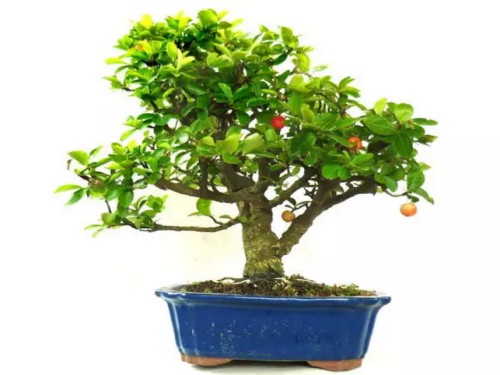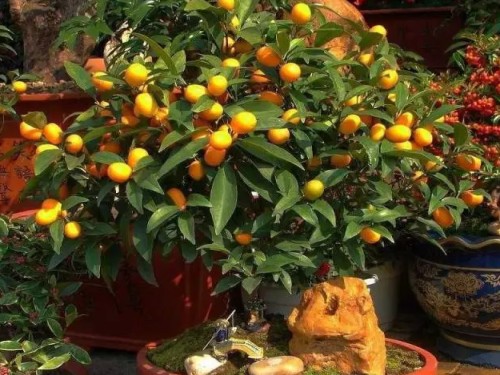How to trim the bonsai of honeysuckle
Pruning of Flos Lonicerae is an effective technical measure to regulate stem growth, promote flower bud differentiation, prolong plant life and stabilize high yield. After pruning, honeysuckle can generally increase production by 35-45%, and the highest is more than twice as high. After taking pruning measures, the flowering period of honeysuckle plants entering the aging period can be prolonged by 5-6 years.
When honeysuckle enters the aging period, it is characterized by sparse leaves and light color, withered branches and weak flowers, and shrunken crown. In this period, heavy cutting was mainly used to renew and rejuvenate to prolong plant life and maintain stable yield. Pruning should strictly grasp the principle of "full pruning of dead branches, heavy pruning of diseased branches, light pruning of weak branches and no pruning of strong branches". The specific practices are as follows:
Completely cut off all the dead branches in the flower stump to reduce nutrient consumption and water evaporation; cut off all or most of the branches of diseases and insect pests, and the remaining part should be conducive to the formation of the regeneration backbone branches of the whole stump and coordinate with the crown. For the weak new buds and growing young branches sprouting on the main stem and backbone branches, except those that are too dense, the rest are left uncut, relying on these dynamic branches to form new effective branches; strong branches, whether normal or overgrown, should be left as the backbone branches for the renewal of the old pier, and should not be cut off.
It should be noted that after the larger branches are sawed off, the closed fracture should be coated with wax melt to prevent the wound from being infected by bacteria and cause plant death; when all the larger lateral branches are cut off, they should be sawed off about 30 cm from the stem, so that the latent buds can germinate and form new branches. When cutting off a large dead side branch, it should be sawed off at about 2 cm away from the stem, the saw blade is beveled and downward. The restoration and cutting of honeysuckle should be carried out in early autumn and winter.
Honeysuckle has developed root system, strong adaptability, lax soil requirements, easy to survive, and bonsai is basically free of diseases and insect pests. In addition to ground planting, honeysuckle is also a rare good material for watching flowers and dry bonsai. Because of its larger branches, although the trunk is vigorous and simple, but the branches are extremely brittle, easy to break and rot, and larger branches, do not easily change their shape and angle, let alone distort the shape and angle of the trunk and branches like other miscellaneous wood bonsai. So how to trim the bonsai of honeysuckle? is there any good way to trim it?
I. selection of pile head of Honeysuckle
Although honeysuckle has all kinds of pile heads in nature, there are not many suitable for making bonsai, so we should try to choose stumpy roots, stout, vigorous and simple, curved changes, short and compact tree shapes, thick and short internodes, and natural tree stumps.
Second, the pruning time of honeysuckle:
1. Bonsai of honeysuckle can be planted and trimmed before sprouting from winter to the next year. According to the needs of bonsai modeling, 3-5 main branches are generally left, each branch has 2-3 buds, and all other branches are cut off, which is the key to ensure rapid shaping. In addition, after each flower fade, pruning and shaping must be carried out in time combined with fertilization, so as to achieve the ornamental effect of blooming many times.
2. Secondly, pick out the heart and wipe the bud. Honeysuckle bonsai sprouting is very critical, according to the growth characteristics and modeling needs of honeysuckle, sprouting should be carried out many times every year. Especially when sprouting in early spring, every node of honeysuckle is covered with uneven sprouts, so you should be good at identifying them. (1) it is necessary to timely erase the overgrown shoots that will grow vigorously and tangled around the tree in the future, and in the process of growth, especially to firmly control the overgrown shoots; (2) to erase the thin branches and buds that are unable to bloom in the future, so as not to affect their ventilation and light. (3) only the buds of ordinary growing branches that can blossom normally are generally cut off around the 20cm after the branches are formed, most of the branches can be flowered, and there are many flowers. For individual long branches that affect the shape of the tree, you can first pick the heart to ensure that the shape of the tree is compact, ventilated and transparent, without any winding branches.
Third, the pruning method of honeysuckle
1. For honeysuckle pruning, many flower friends do not dare to do it for fear that the pruning is wrong. Honeysuckle pruning friends should know what kind of tree they want to trim, and then they can start according to their own honeysuckle pruning. The key to honeysuckle pruning lies in the flower friends' own goal.
2. If honeysuckle is to be cultivated into a tree-shaped structure with only one trunk, the new sprouting from the bottom of the plant needs to be cut off, while the new one sprouting at the upper part of the trunk is not needed for the time being.
3. If the new branches from the bottom of the trunk are stout and useful, you can keep them as appropriate (depending on your personal preference) for future reproduction. For example, the sturdy branches sprouting at the bottom of the trunk can be reused when they grow up in the future, and the new plants can be propagated by striping.
Same topic article: honeysuckle branch pruning technique
Honeysuckle is a semi-evergreen winding shrub with well-developed roots and tolerance to drought and barren. it is an ideal soil and water conservation plant. Honeysuckle pruning varies according to planting form, site conditions and management level. Today, I would like to introduce the branch pruning technology of honeysuckle.
First, the pruning period: the best pruning of honeysuckle is from December of each year to early March of the following year.
Second, the pruning method: the pruning of young plants. The pruning of young plants is mainly plastic surgery, with emphasis on cultivating primary, secondary and tertiary backbone branches to form a solid skeleton and lay a foundation for high yield in the future. The plant shape generally adopts natural round head shape and umbrella shape.
The main results are as follows: 1. Pruning in the same year, 1 branch is naturally round head shaped, 3 branches are umbrella shaped, 3 to 5 nodes are short, and all the other branches are thinned. In the second year of pruning, 2-3 natural round head-shaped branches and 6-7 umbrella-shaped strong branches were left as primary backbone branches, 3-5 segments were cut short, and all other branches were removed. In the third year of pruning, 7 to 11 natural round head branches and 12 to 15 umbrella shaped branches were selected as secondary backbone branches, so as to cultivate primary, secondary and tertiary backbone branches.
2. Pruning of mature plants. The skeleton of adult plants has been basically formed, pruning is mainly to cultivate robust flowering mother branches, using new branches to adjust the angle of backbone branches to remove the weak and retain the strong. The base diameter of the selected flowering mother branch must be more than 0.5 cm. There are at most 2 to 3 flowering mother branches per secondary backbone branch, 4 to 5 per third backbone branch, and 80 to 120 flowering mother branches in the whole plant.
3. Pruning of old plants. The honeysuckle after 20 years, the plant gradually aging, at this time pruning, in addition to leaving enough flowering mother branches, mainly for backbone branch renewal and rejuvenation, so that the adult age is old and the branch age is young, in order to maintain the yield. The method is to lay equal stress on interception and to restrain the front and promote the back.
The above is the honeysuckle branch pruning technology, pruning to remove cross branches, drooping branches, withered and weak branches, disease and insect branches and invalid branches. The flowering mother branches left behind should be truncated, those who are prosperous should be truncated 4 to 5 lightly, and those who are moderate should be heavily truncated 2 to 3, so that their distribution is uniform and the layout is reasonable.
Time: 2019-06-10 Click:
- Prev

Pruning technique of Cherry Bonsai
Potted cherry blossoms in spring, the fruit is ripe in early summer, the flowers are beautiful and colorful, which is of ornamental value. The fruit ripening period is very early and the flavor is good. In pruning, attention should be paid to the selection and retention of the main branches of young trees, which should be cut short to promote the growth of strong branches, and grow more branches in their infancy.
- Next

How to trim the bonsai of fruit trees
The excellent works of fruit tree bonsai not only have the harvest beauty of fruit tree cultivation, but also have the artistic beauty of Chinese traditional bonsai, which has its own distinct style and characteristics. When there are too many bonsai branches of fruit trees, it is easy to cause scattered nutrients, lack of internal light, poor fruit quality and so on. Therefore, before the fruit trees sprout in spring,
Related
- Fuxing push coffee new agricultural production and marketing class: lack of small-scale processing plants
- Jujube rice field leisure farm deep ploughing Yilan for five years to create a space for organic food and play
- Nongyu Farm-A trial of organic papaya for brave women with advanced technology
- Four points for attention in the prevention and control of diseases and insect pests of edible fungi
- How to add nutrient solution to Edible Fungi
- Is there any good way to control edible fungus mites?
- Open Inoculation Technology of Edible Fungi
- Is there any clever way to use fertilizer for edible fungus in winter?
- What agents are used to kill the pathogens of edible fungi in the mushroom shed?
- Rapid drying of Edible Fungi

